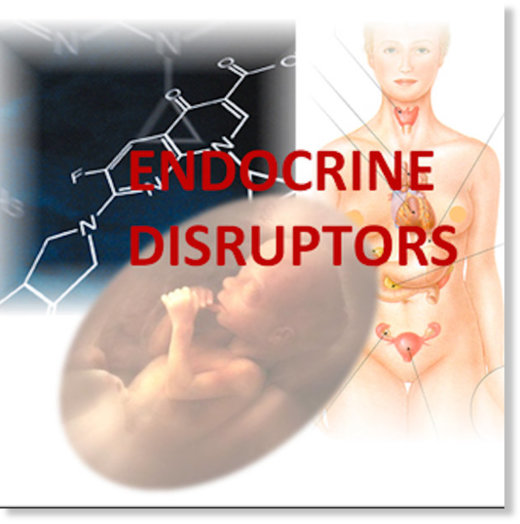Both of these chemicals are known hormone disruptors and are found virtually everywhere in the Western world. From plastics to pesticides and from makeup to food both pthalates and DDE are almost impossible to avoid by anyone living a life that is considered somewhat normal.
But both have been strongly linked with "common" female reproductive issues, particularly endometriosis and fibroids.
Between fibroids and endometriosis, it is estimated that 70% of women will experience infertility as a result of exposure.
There are substantial human and toxicological studies (in mice and other lab animals) that suggest that exposure to these endocrine-disrupting chemicals, many of which are increasing in use, are contributing to female reproductive conditions," said Dr. Leonardo Trasande, associate professor of pediatrics at New York University School of Medicine.DDE is actually a breakdown product of DDT that was banned for agricultural purposes by the United States and Europe in the 1970s. The product is still used for disease control and its agricultural residue still lingers in the environment. For that reason, most exposure to phthalates comes from eating food produced in contaminated soils/water and from eating food and drinks stored in plastic that contains phthalates.
The researchers of the new study determined that 56,700 cases of fibroids in women in Europe were likely due to DDE exposure and 145,000 cases of endometriosis were likely caused by pthalates.
The researchers estimate that the problems resulting from just these two chemicals would cost the European Union 1.41 billion Euros a year. It is important to note that this study only researched two chemicals, neither of which were BPA, and even more present hormone-disruptor.
A previous estimate provided by a panel of experts suggested that endocrine-disrupting chemicals would cost Europe 157 billion Euros.
While the costs are staggering, they are not the most important issue. Human progress is not measured by cost, but by human lives and the conditions in which they live.
It is time that the European Union, the United States and the rest of the world begin to move away from these chemicals and to remove them from the environment.




Comment: Read more about Chemicals Of Concern like phthalates: